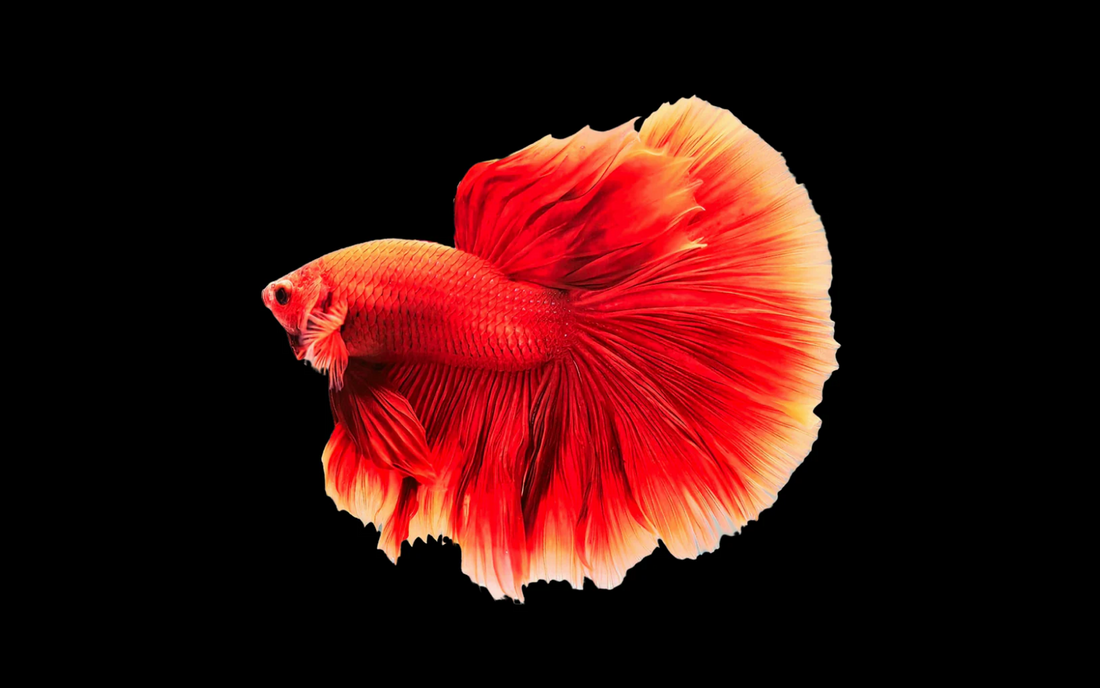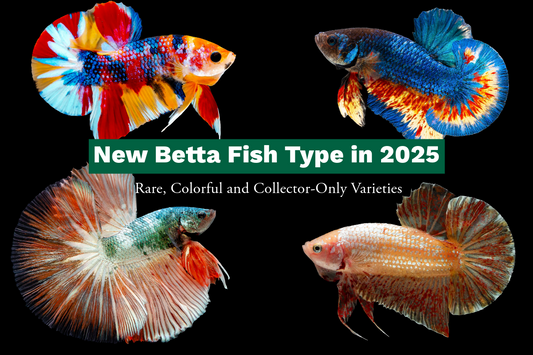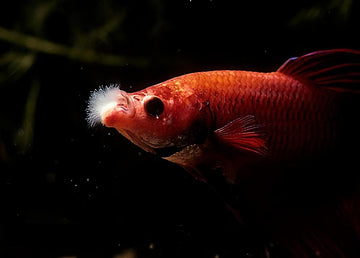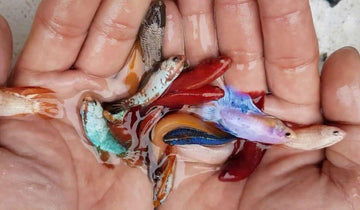8 Easy Tips on How to Choose a GREAT Betta for Your Aquarium!

Contents
- 1- Tip 1: Look for Active and Curious Fish
- 2- Tip 2: Inspect the Fins and Body for Damage
- 3- Tip 3: Pick a Fish with Bold, Bright Colors
- 4- Tip 4: Watch How It’s Breathing
- 5- Tip 5: Look at Their Personality
- 6- Tip 6: Pick the Tail Type You Like
- 7- Tip 7: Don't Rush Your Decision
- 8- Tip 8: Find a Trusted Betta Vendor
Choosing the perfect betta for your aquarium can feel a bit overwhelming with so many options out there, but it doesn’t have to be!
Whether you’re a first-time betta owner or adding to your collection, knowing what to look for can make all the difference.
From their color and fins to their overall health and activity level, picking a betta that will thrive in your tank is easier than you might think.
In this guide, we’ll walk you through seven simple tips to help you choose a great betta for your aquarium, so you can bring home a fish that’s not only beautiful but also healthy and ready for your tank.
Tip 1: Look for Active and Curious Fish
A healthy Betta is active, alert, and curious about its surroundings.
It should swim around the tank confidently and react to things happening outside the tank, like your hand moving.
If it’s just lying at the bottom or floating around without much energy, that’s usually not a good sign.

Bettas are naturally energetic and territorial, so you want one that’s exploring and showing interest in what’s going on around it.
If it’s sluggish or uninterested, it could be stressed or unhealthy.
Pro tip: Ask the store to feed the Betta while you're there. A healthy fish will go after food right away without hesitation.
Tip 2: Inspect the Fins and Body for Damage
Betta fish are known for their stunning, flowing fins, but damaged or torn fins can be a sign of stress or injury.
Take a close look at the Betta’s fins and tail to see if they’re in good shape.
Any tears, fraying, or holes could mean the fish has fin rot or other health problems.
Also, check its body for any lumps, spots, or weird discoloration. Healthy Bettas have smooth, shiny scales and bright colors.

You’ll want to avoid fish with obvious injuries or anything that looks off.
Tip 3: Pick a Fish with Bold, Bright Colors
Bettas come in all kinds of amazing colors—reds, blues, purples, and even multi-color combinations.

The brighter and bolder the color, the healthier the Betta usually is and a fish that looks dull or faded might be stressed or sick.
That said, some Bettas naturally have more subtle colors or might not be showing their full colors if they’re stressed.
But generally speaking, go for a Betta with rich, vibrant colors.
Pro Tip: If you want something really eye-catching, look for rare color patterns like bi-colors, marbled, or metallic shades. They’ll make your tank pop!
Tip 4: Watch How It’s Breathing
Healthy Bettas should have a smooth, steady breathing rhythm—no heavy or rapid breathing.
If the fish is gasping at the surface or you notice its gills moving too fast, it could be a sign of illness or poor water conditions.
Bettas do have a special organ that lets them breathe air from the surface, but they shouldn’t be relying on it all the time.
Pro Tip: Here’s how to tell if the water’s bad:
- Cloudy water means it’s dirty.
- Algae covering the tank shows it’s not being cleaned.
- If it smells bad, the water is likely full of waste.
- Dead or sick fish in the tank are big red flags.
If you spot any of these, the Betta's environment probably isn’t the best.
Tip 5: Look at Their Personality
Bettas are known for having a bit of an attitude, especially males who tend to be more territorial and aggressive.
You’ll often see the males flaring their fins and showing off. Females, on the other hand, are usually calmer but can still be a bit feisty.
If a Betta is constantly flaring and attacking everything, it might be stressed.
However, if it's hiding a lot or seems uninterested in what’s going on, it could be sick or not getting enough food.
You want a Betta that’s confident and curious—active but not overly aggressive.
Pro tip: Look for a fish that’s exploring the tank and reacting to its surroundings in a curious way.
Tip 6: Pick the Tail Type You Like
One of the coolest things about Bettas is their variety of tail types. Here are some common ones you might see:
- Veil Tail: The classic Betta with long, flowing fins.
- Crowntail: Bettas with spiky, web-like fins.
- Halfmoon: These have impressive 180-degree fin spans.
- Plakat: Short-finned Bettas that look more like their wild counterparts.

Each tail type has its own unique look, and some require more care than others. For example, long-finned Bettas like Veil Tails are more prone to fin damage, while short-finned ones like Plakats are more active and less likely to hurt themselves.
Pro tip: If you’re new to Bettas, start with a short-finned one. They’re easier to care for and less likely to develop fin problems.
Tip 7: Don't Rush Your Decision
It can be tempting to choose the first Betta that catches your eye, but taking the time to research and observe different fish will help ensure you find the healthiest, most vibrant one.
If a particular Betta doesn’t look right or seems sluggish, it’s okay to walk away and wait for another one.
Many reputable breeders and pet stores will allow you to place a fish on hold while you decide, giving you time to research and ask more questions.
Don’t feel pressured to make an immediate purchase—after all, a Betta is a long-term companion that deserves careful consideration.
Tip 8: Find a Trusted Betta Vendor
Looking for a Betta fish that’s not only beautiful but also healthy?
Tropicflow has you covered! We offer a wide range of stunning Bettas in vibrant colors and unique varieties like Halfmoon, Crowntail, and Plakat.
Before sending them your way, we make sure each Betta is quarantined for two days to ensure they’re in top shape and ready for their new home.

Plus, with our 100% Live Arrival Guarantee, we’ve got your back—if something happens during shipping, we’ll make it right.
Our flat-rate shipping also lets you save when you buy multiple fish, so stocking your tank with healthy, colorful Bettas has never been easier.
Explore more and find your perfect Betta at Tropicflow.
No comments











0 comments